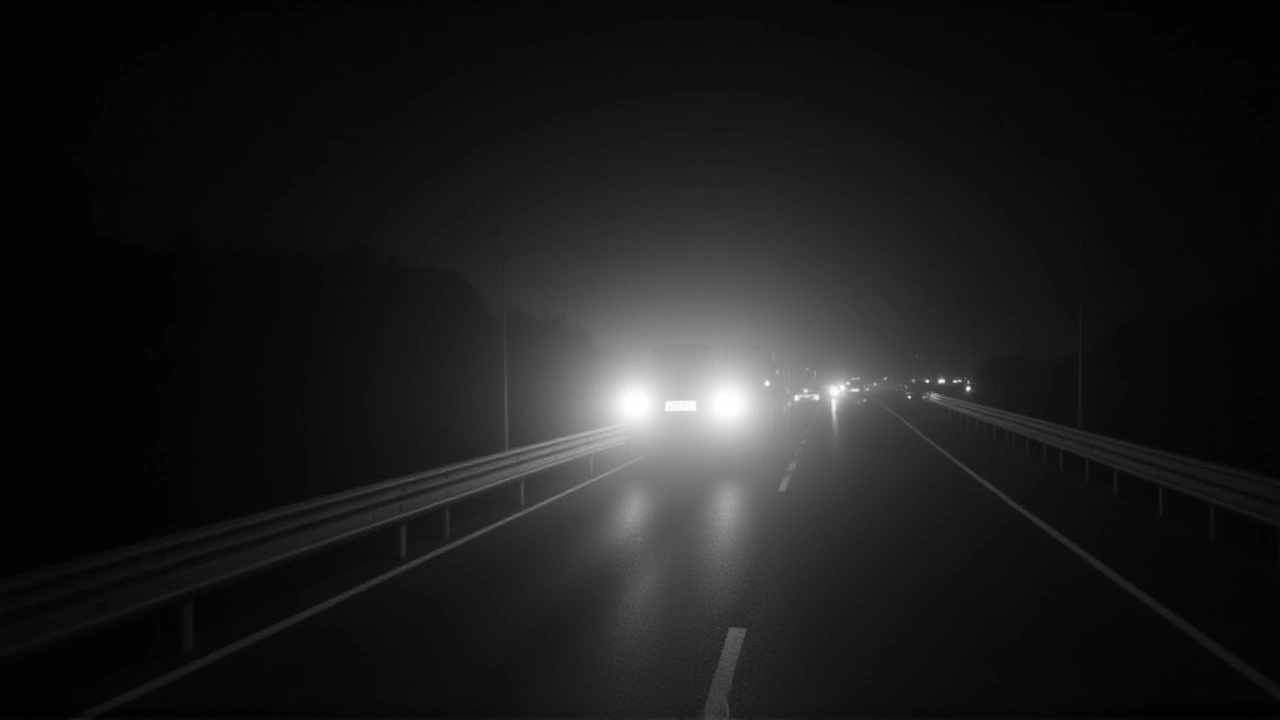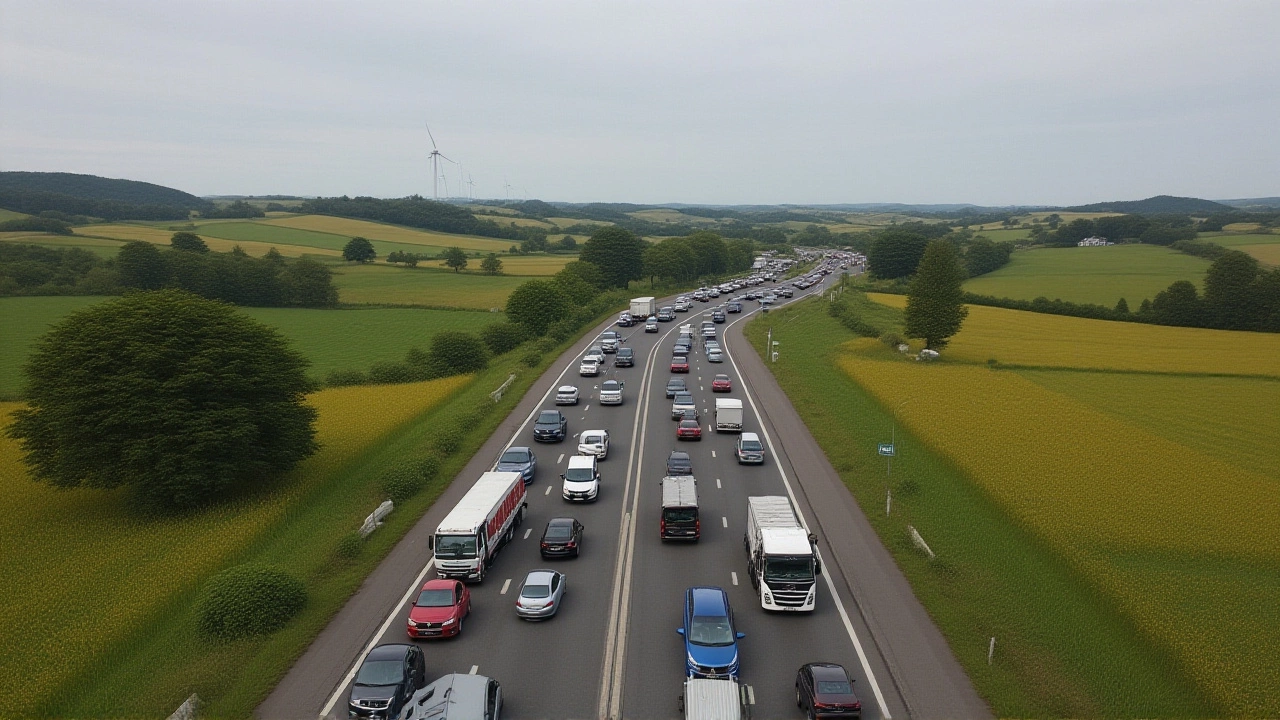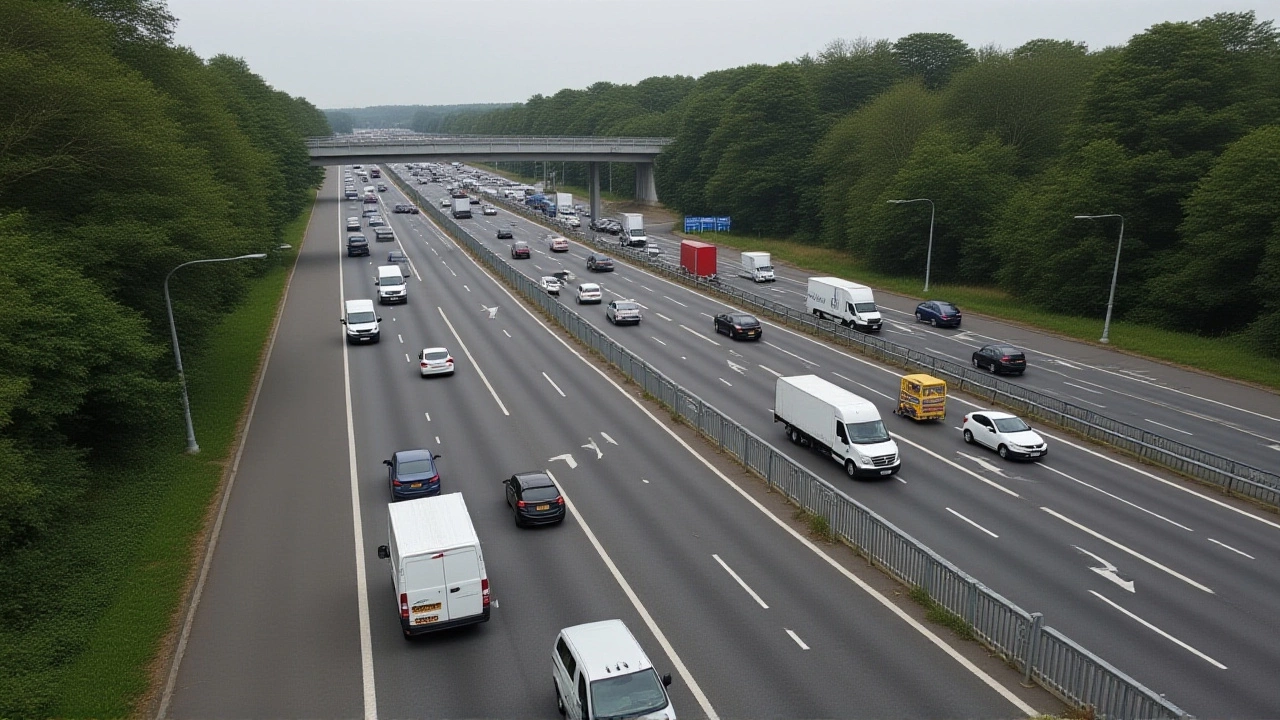A nine-vehicle pileup on the westbound M56 at 7:50 AM on October 20, 2025, sent shockwaves through northwest England’s transport network, triggering cascading delays across the M6, M53, and M62 motorways. Emergency crews battled to clear debris and treat injured motorists as queues stretched over 20 miles, turning what should’ve been a routine commute into a nightmare for thousands. The crash, between Junctions 12 and 14 near Lymm and Bowdon, didn’t just block one road—it exposed how fragile the region’s motorway links have become.
Chaos on the M56: A Perfect Storm of Collisions
At 7:50 AM BST, a chain reaction of collisions unfolded on the M56’s westbound carriageway. Nine vehicles, including two lorries, three cars, and a motorcycle, were involved in a tangle of metal and shattered glass. Cheshire Fire and Rescue Service responded immediately, declaring a full closure. Their spokesperson confirmed: Cheshire Fire and Rescue Service crews worked for over four hours to extricate trapped occupants and clear the scene. Inrix, the traffic analytics firm, recorded delays exceeding 90 minutes at peak, with westbound traffic backed up to Junction 10 in Preston Brook by 9:30 AM.
What made it worse? Rubbernecking. Eastbound traffic, unaffected by the crash itself, slowed to a crawl as drivers gawked at the wreckage across the central reservation. By mid-morning, congestion had spilled from Frodsham all the way past Junction 15—the M53 interchange near Runcorn—turning what should’ve been a 15-minute detour into a 45-minute crawl.
Domino Effect: M6, M53, and M62 Collapsed Together
This wasn’t an isolated incident. The previous day, October 19, a multi-vehicle crash on the M62—though details remain sparse—had already strained regional traffic flows. Then came the M6 tragedy: a motorcyclist died after colliding with a lorry near the Cheshire border, prompting the arrest of one man. Cheshire Constabulary confirmed the fatality and arrest, but released no further details on cause or vehicle types.
The geographic overlap turned minor disruptions into a regional gridlock. The M62-M6 interchange at Junction 21 near Warrington became a bottleneck as diverted traffic from the M62 funneled onto the M6. Meanwhile, the M53—normally a bypass route—became a parking lot as drivers abandoned the M56. National Highways scrambled to activate emergency diversions via the A56 and A556, adding up to 25 miles and 40 minutes to journeys that normally take under an hour.

Who Responded—and Who’s to Blame?
The response involved a complex web of agencies. Cheshire Fire and Rescue Service led the rescue effort, while Greater Manchester Police and Cheshire Police managed traffic control and investigations. Paramedics from North West Ambulance Service treated at least seven people, two of whom were hospitalized with serious injuries.
But the real question is why. The weather was clear—no rain, no fog, no ice. No major incidents had been reported on the M56 in the previous 18 months. Yet the crash involved nine vehicles in a single chain reaction. Inrix data showed no prior congestion or slowdowns in the 15 minutes before impact. That suggests either sudden driver error, a mechanical failure in one vehicle, or a combination of both.
History Repeats Itself—But Without the Snow
Cheshire’s motorways have seen chaos before. During the 2018 ‘Beast from the East’ storm, snow and ice stranded over 1,000 vehicles on the M56 and M62 for 18 hours. But this time? No weather culprit. Just human error, perhaps, amplified by heavy traffic and poorly timed lane changes near Junction 12—a known pinch point where the M56 narrows from three to two lanes before merging with the M6.
National Highways has already announced it will review the safety design of Junctions 12 to 14 by November 15, 2025. That’s fast. Too fast, some critics say. The same stretch was inspected in 2022 after a minor rear-end collision. No changes were made. Now, with injuries, arrests, and a death on the record, pressure is mounting.

What’s Next? Investigations and Infrastructure Scrutiny
Cheshire Constabulary’s Road Policing Unit is expected to release preliminary findings within 72 hours. They’re analyzing dashcam footage, vehicle black boxes, and mobile phone data from drivers involved. Meanwhile, National Highways has deployed temporary variable message signs along the entire corridor to warn of ongoing hazards.
Local councils are already calling for permanent speed reductions at Junction 12 and additional signage. One resident from Lymm told reporters: “I’ve driven this route for 18 years. I’ve seen near-misses every week. Nobody’s done anything until someone died.”
The M56 crash wasn’t just an accident. It was a warning. And unless infrastructure catches up to traffic volume—and driver behavior improves—the next one could be worse.
Frequently Asked Questions
How many people were injured in the M56 crash?
At least seven people were treated at the scene, with two transported to Royal Manchester Children’s Hospital and Warrington Hospital with serious but non-life-threatening injuries. The remaining five sustained minor injuries and were released after treatment. No fatalities were reported from the M56 crash itself, though one motorcyclist died separately on the M6.
Why did the M53 get so congested if the crash was on the M56?
Eastbound M56 traffic slowed dramatically as drivers slowed to look at the wreckage, creating a ripple effect. Many then exited at Junction 15 to avoid the delay, overwhelming the M53’s capacity. The M53 wasn’t designed to handle rush-hour volumes from both Manchester and Liverpool, making it a pressure valve that burst.
What’s the timeline for the M6 motorway investigation?
Cheshire Constabulary confirmed the arrest of one man following the fatal M6 crash, but has not named him or released details on whether alcohol, speed, or mechanical failure were factors. A full report is expected within six weeks, though preliminary findings on the M56 crash will be released within 72 hours of the incident.
Are there plans to widen the M56 or add more lanes?
No formal plans exist yet. National Highways says current funding is focused on the Northern Powerhouse Rail project. However, the M56 crash has reignited calls from local MPs to fast-track a £120 million upgrade to Junctions 10–14, including adding a third lane and improving merge signage. A feasibility study is now being fast-tracked.
How does this compare to other UK motorway crashes this year?
The M56 crash ranks among the top five multi-vehicle pileups in England this year. Only the January M1 crash near Leeds (11 vehicles) and the July M4 pileup near Bristol (eight vehicles) involved more cars. What sets this apart is the geographic domino effect—it shut down three major motorways simultaneously, a rare occurrence even in winter.
Can I still use the M56 now?
The M56 reopened fully at 1:45 PM on October 20, 2025. However, temporary 50 mph speed limits remain in place between Junctions 11 and 14 until November 15, and police are conducting random checks for distraction-related driving. Delays are minimal now, but drivers are advised to expect slower merging and increased patrols.

Write a comment